“I want to thank you, my Lord, for sister water,
so useful and humble
and precious and pure.”
San Francesco d’Assisi
Of all water uses, civil water concerns us on a daily basis. The gesture of opening the home tap, repeated countless times a day, becomes a mechanical routine operation that risks making us forget the value of the precious liquid that escapes from the tap. It can even be taken for granted that good water comes out. This mechanical action prevents us from recognizing the meaning that lies behind the flow of water.
Behind tap lie a very intense work and an important organization, with considerable costs. We notice it only occasionally looking at the bill where a precise amount is stated: it is the cost of the Integrated Water Service. This service has to necessarily consider not just the costs of the aqueduct to grant good, safe and controlled water in our homes, but also the costs of sewer and depuration, that’s to say of diversion of wastewater. Nowadays we are so used to these services that we have lost the sense of “conquest” related to it. in the modern conception, water has become a kind of “right” but we often forget that we all have also fundamental “obligations” towards it.
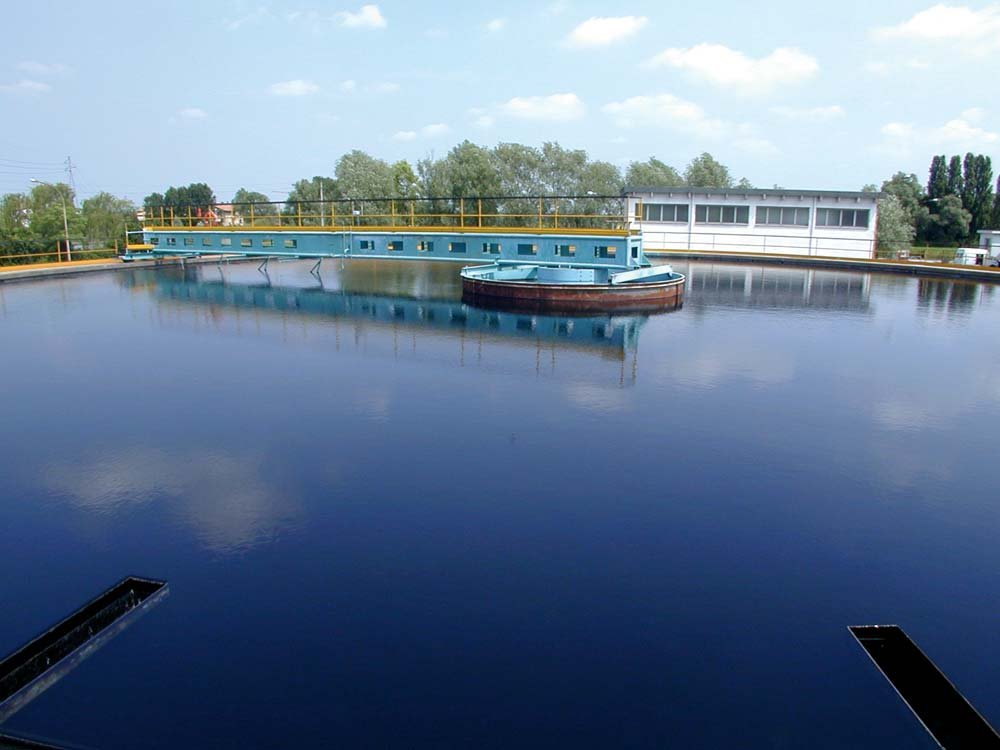
Among the services aimed at the citizen, the water service is certainly special for its importance and delicacy. It differs from all other services offered by the State to citizens (transport, waste, etc.) because both individuals and communities depend on water..
Article 144 of the Environmental Code (the law that involves much of the water service legislation) states that “Water is a resource that has to be protected and used according to solidarity criteria: any use made of it must safeguard the expectations and rights of future generations to enjoy an intact environmental heritage" (Art. 144 of D.lgs. 152/2006, “Environmental regulations”).
Water is defined as a State good. Water, then, is a collective good that belongs to all citizens (including water under the garden of our house!):
“All surface water and ground water,
even if not extracted from the subsoil,
is of State property”.
Paragraph 2 unequivocally reiterates the references to the proper use and protection of this precious resource and calls on every citizen to bear important responsibility. Besides the right to have good and drinkable water in our houses, there’s also the principle of responsibility, that calls on to the obligation to preserve the resource for future generations and for all humans beings, through parsimonious use and unconditioned participation of all citizens and Institutions.
In this regard, in a resolution dated 28 June 2010, the United Nations (UN) reaffirmed the criteria of solidarity of its uses, enshrining the universal and fundamental human right to water. This is an historic declaration, which finally recognizes the right of all human beings to have access to a necessary and irreplaceable good. How this can really happen remains, however, a great challenge (and hope) for millions and millions of people, concentrated mostly in the countries of the South of the world.
It is important to know that even if water is a renewable good, still remains exhaustible. This contradiction is only apparent and can be explained with the constant and crescent water request for domestic use as well as for production, agricultural and zootechnical activities. Everywhere and for every human activity there is need of water.
The concept of water exhaustion must be related not only to population growth, but also to pollution [cf. Pollution], the latter being a consequence that every industrial and hyper-technological society ends up generating, sometimes irresponsibly. Pollution, in fact, renders useless, as well as harmful to the environment, a precious part of the water previously available for human consumption. The combination of these factors means that good quality water supplies are shrinking dramatically, not only in Italy, but in every corner of the world.
The Integrated Water Service consists of all public services for the collection, supply and distribution of water for civil use, sewerage and wastewater treatment systems. These services are operated in accordance with national and Community rules

The Lagoon of Venice Basin Council is a public authority (established under Regional Law of Veneto 27 April 2012, n. 17) with the task to govern the Integrated Water Service in 36 Municipalities of the Provinces of Venice and Treviso that, together, form the Optimum Territorial Coverage (ATO) “Lagoon of Venice”.
It it composed by the District Assembly, formed by the majors of the 36 Municipalities belonging to the designated Optimum Territorial Coverage, by the Institutional Board and by the President.
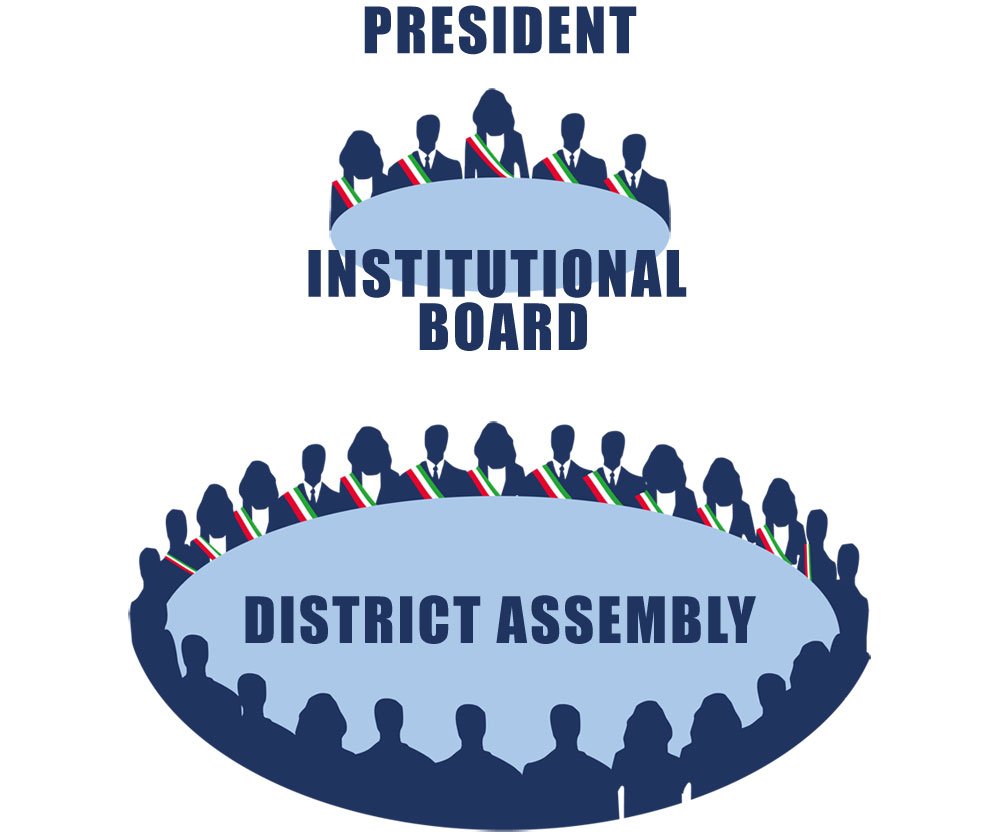
According to the legislative decree n. 152/2006 the Basin Council carries out the following functions:
- organization of Integrated Water Service;
- planning of investments for the compliance of the infrastructures and the achievement of the objectives for the improvement of the service [cfr. District Plan];
- assignment of the management of the integrated water service to an operator, by signing a service contract that requires the operator to ensure adequate quality standards for the user, irrespective of his place of residence or economic capacity;
- operator control, in such a way that it makes the planned investments, maintains adequate technical and organizational standards and applies the fee correctly;
- establishes the fee, which must ensure that all operating and investment costs are covered.
The final objective of the Basin Council is the pursuit of the protection of water resources, guaranteeing an efficient, effective and economic management of the service.
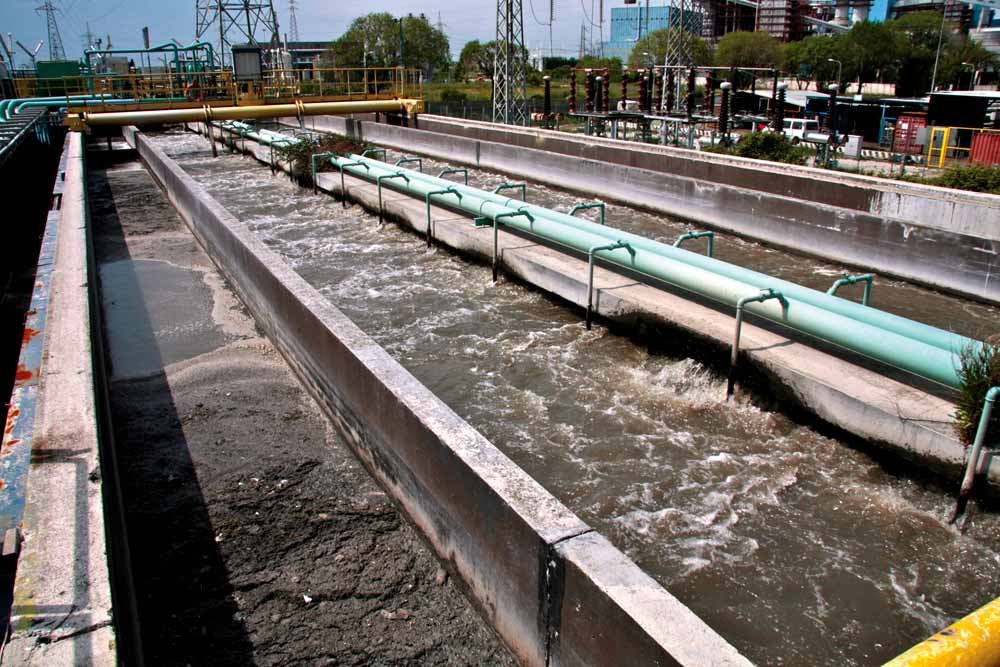
The Optimum Territorial Coverage “Lagoon of Venice” has an extension of 1.866 Kmq, with a catchment area of almost 790.000 inhabitants (+30 million of tourist per year).
At present, operators VERITAS S.p.A. and ASI S.p.A. operate in the area.
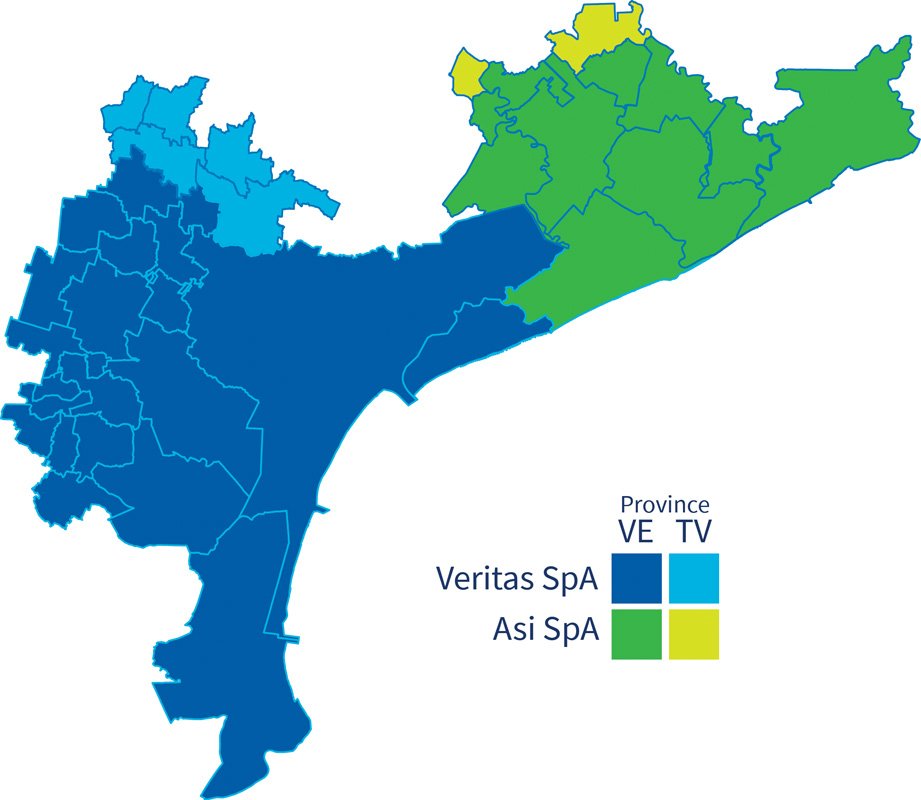
Operators organize the service and implement what is foreseen by the District Plan:
VERITAS SPA
25 Municipalities
1.300 kmq
670.000 inhabitants
Province of Venice: Campagna Lupia, Campolongo Maggiore, Camponogara, Cavallino Treporti, Chioggia, Dolo, Fiesso d’Artico, Fossò, Martellago, Mira, Mirano, Noale, Pianiga, Salzano, Santa Maria di Sala, Scorzè, Spinea, Stra, Venezia, Vigonovo
Province of Treviso: Mogliano Veneto, Morgano, Preganziol, Quinto di Treviso, Zero Branco
ASI SPA
11 Municipalities
570 kmq
130.000 inhabitants
Province of Venice: Caorle, Ceggia, Eraclea, Fossalta di Piave, Jesolo, Musile di Piave, Noventa di Piave, San Donà di Piave e Torre di Mosto
Province of Treviso: Cessalto, Zenson di Piave
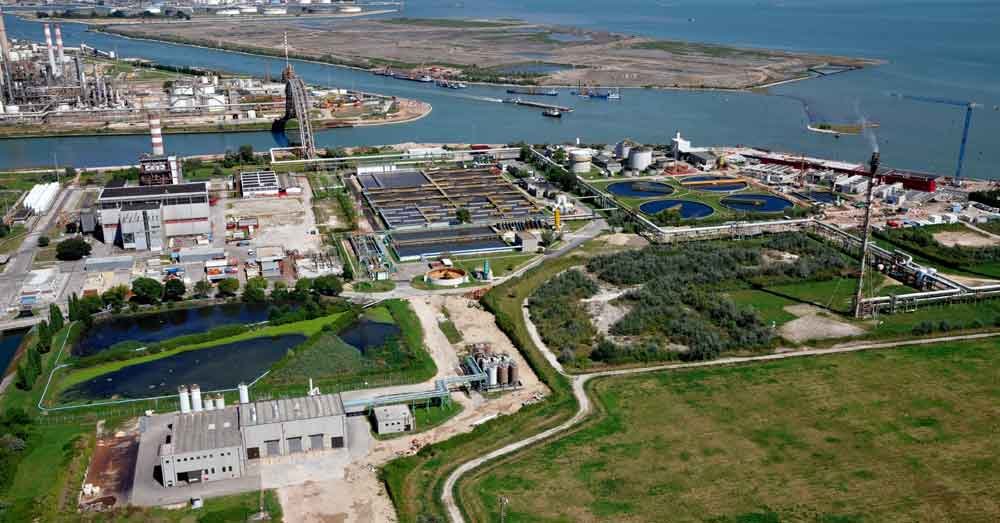
Italy has the lowest fees in Europe. Nevertheless, it’s good to precise that we have, on average, aqueducts that lose water from all sides! Only part of the water fed into the grid reaches the end user.
Currently, 34% of drinking water is irretrievably lost. AEEGSI estimates that it will take at least 65 billion euros over the next 30 years to modernize and maintain the aqueducts, so as not to waste this increasingly precious resource.
24% of the Italian aqueduct network is over 50 years old, 36% is between 31 and 50 years old. The percentage of unplanned maintenance (92%) is a clear indicator of the obsolescence of wastewater treatment plants, which also have many years of service behind them. In Italy, moreover, the collecting system and treatment plants are inadequate, so that many urban agglomerations and certain industrial sectors (more than 1 000 over 2 000 inhabitants) have not been served as required by Community legislation (Directive 91/271/EEC). For this reason, an infringement procedure is under way against Italy, with related economic sanctions, defined by the European Court of Justice for more than 450 million euros. Therefore, it is clearly necessary to resume investing in networks and installations, even if it is not always easy or immediate to obtain the necessary funding.

AEEGSI (Authority for Electric Energy, Gas and Water System) is the authority in charge of defining the tariff calculation (Water Tariff Method), while local authorities quantify and decide the articulation of tariffs between types and consumption bands. The tariff therefore represents the consideration for the Integrated Water Service and includes coverage of all operating and investment costs.
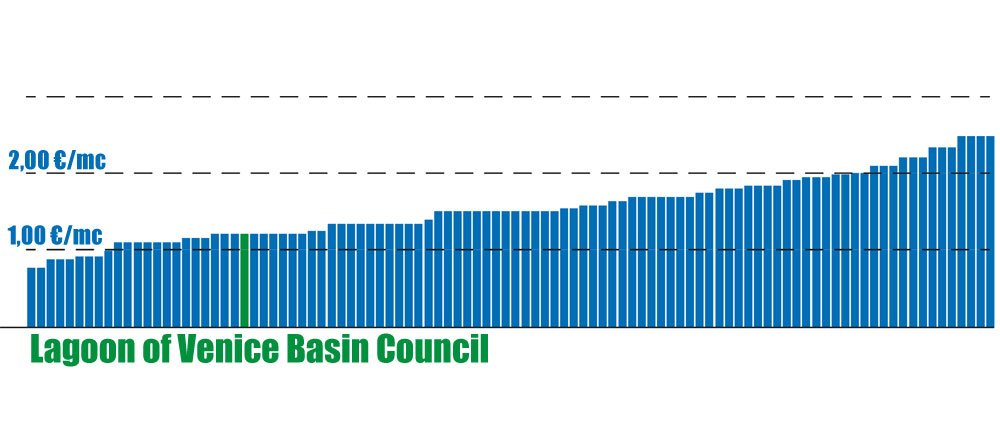
District Plan is the main planning tool of the Integrated Water System available to the Basin Council.
It defines, both in terms of cost and in terms of time, the objectives relating to the service levels to be achieved or maintained, with the relative program of interventions. In addition, the District Plan is the contractual instrument through which the manager is entrusted with the management of water, sewerage and purification services.
EXTRACTION: Water that feeds the water service is taken from nature. It can be surface water (rivers or lakes) or groundwater.
Veritas Spa: - groundwater 91% (51 wells)
- river water 9%
Asi Spa: - groundwater 64% (17 wells)
- river water 36%
PURIFICATION: All the water taken from the environment is always purified (even the groundwater of high quality) through processes of filtration, decantation and disinfection.
Veritas Spa: - groundwater, 90 millions mc/year of withdrawn water (3 disinfection facilities)
- river water, 8 ml of mc/year (2 purification facilities)
Asi Spa: - groundwater 15 ml of mc/year (2 disinfection facilities)
- river water 8,6 ml of mc/year (2 purification facilities)
ADDUCTION: Purified water is pumped into the adduction network and supplied to houses, schools, offices etc.
Veritas Spa: - 4.000 km of water network
Asi Spa: - 1.700 km of water network
SEWERAGE: Once used, water is diverted into drains in the sewerage system and sent to purification.
Veritas Spa: - 2.100 km of sewerage network
Asi Spa: - 900 km of sewerage network
DEPURATION: Dirty water coming from the sewerage network is subjected to different treatments to separate the impurities in the form of sludge, then inerted. Waste water is only returned to nature when it has been cleaned and is compatible with a healthy environment.
Veritas Spa: - 78 millions of treated sewage
- 9 depuration facilities
Asi Spa: - 24 millions of treated sewage
- 20 depuration facilities
MONITORING: Water released in the netwoek and water returned to the environment are daily chemically and biologically checked by the same operators.
The certificate of potability is issued by the Local Health Authority, which carries out its own analyses, while the Arpav and the Interregional Provisional Authority control the discharges of the purified wastewater.
Asi Spa and Veritas Spa carry out almost 1,000 chemical and biological analyses of water and wastewater treatment services every day.
The water that comes out of our taps at home, as well as being good and not producing waste, is always safe and controlled.
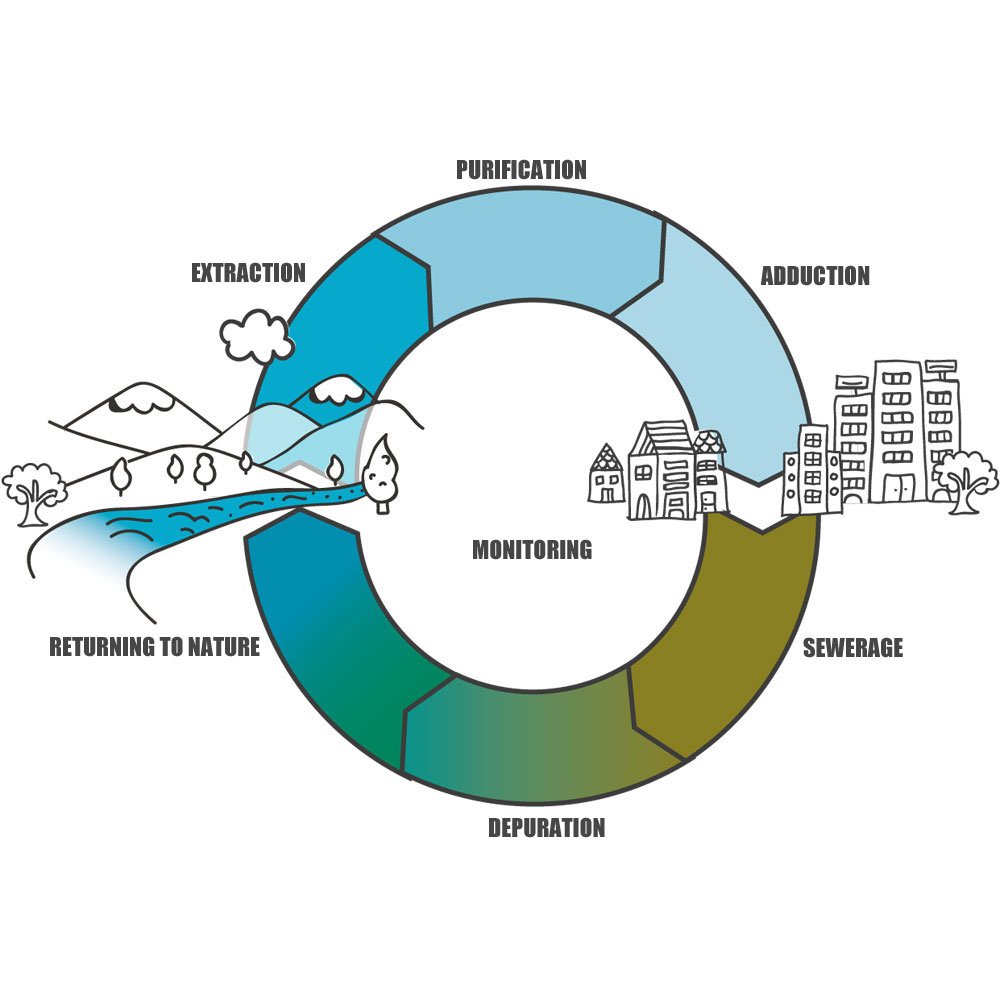
The project implemented by
Civiltà dell'Acqua

is supported
Water Agency 'Lagoon of Venice'
![]()
![]()
Text and graphic layout: Michele Cappellesso
Project coordination: Eriberto Eulisse